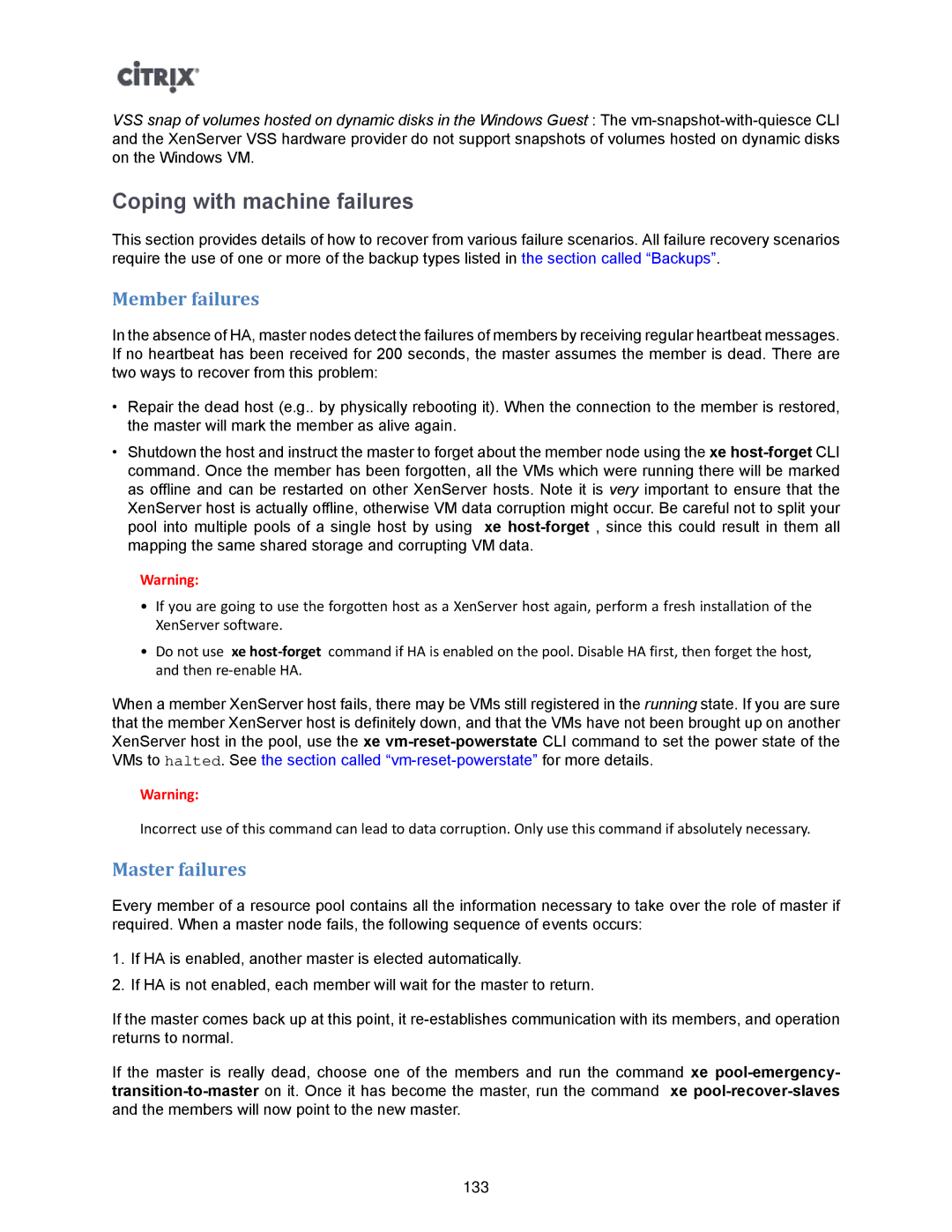VSS snap of volumes hosted on dynamic disks in the Windows Guest : The
Coping with machine failures
This section provides details of how to recover from various failure scenarios. All failure recovery scenarios require the use of one or more of the backup types listed in the section called “Backups”.
Member failures
In the absence of HA, master nodes detect the failures of members by receiving regular heartbeat messages. If no heartbeat has been received for 200 seconds, the master assumes the member is dead. There are two ways to recover from this problem:
•Repair the dead host (e.g.. by physically rebooting it). When the connection to the member is restored, the master will mark the member as alive again.
•Shutdown the host and instruct the master to forget about the member node using the xe
Warning:
•If you are going to use the forgotten host as a XenServer host again, perform a fresh installation of the XenServer software.
•Do not use xe
When a member XenServer host fails, there may be VMs still registered in the running state. If you are sure that the member XenServer host is definitely down, and that the VMs have not been brought up on another XenServer host in the pool, use the xe
Warning:
Incorrect use of this command can lead to data corruption. Only use this command if absolutely necessary.
Master failures
Every member of a resource pool contains all the information necessary to take over the role of master if required. When a master node fails, the following sequence of events occurs:
1.If HA is enabled, another master is elected automatically.
2.If HA is not enabled, each member will wait for the master to return.
If the master comes back up at this point, it
If the master is really dead, choose one of the members and run the command xe
133
